- Home
- Mary Downing Hahn
The Girl in the Locked Room Page 3
The Girl in the Locked Room Read online
Page 3
I’d had this feeling often. I’d ride my bike past a house and think I’d seen it before, even though I’d never been on that road. Sometimes I’d be talking to someone and know what she’d say next.
I asked Mom about it once, and she told me the experience is called déjà vu—French for already seen. She had it too; almost everyone did.
But this time the sensation was strong enough to make me uneasy. Turning to Mom, I asked, “Does this place seem familiar to you?”
She looked around, taking in the willow tree, the stream, the fields rolling away toward the mountains. “It reminds me of a park in Ohio where we picnicked. The field, the stream, the trees—very similar. No mountains, though.” She laughed. “It was definitely a different place. We’ve never been here before.”
I looked around and shook my head. “I don’t remember any picnics in Ohio.”
“Well, you were only two or three years old, too little to remember, but it’s probably imprinted in your memory.”
Mom flopped down on her back and patted the ground beside her. “Let’s lie here for a while and let the sun dry our clothes.”
I lay down and watched clouds float across the sky like a flock of sheep wandering across a wide blue field. Birds sang, leaves blew in the breeze. I let my mind drift with the clouds.
While I lay there, I had a strange feeling that someone had joined Mom and me. Turning my head, I saw a little girl sitting near me, her face hidden by long yellow hair. She wore an old-fashioned dress, and a doll with a china head lay beside her. The girl was weaving a chain of clover blossoms, her fingers quick and deft as she tied the stems together. She sang too softly for me to hear the words, but the tune was familiar.
Suddenly she turned her head and looked at me. She opened her mouth as if to speak, but a woman called, “Come along, darling. It’s time to go home.”
The girl turned toward her mother, held up the clover chain, and laughed. “Look what I’ve made for you, Mama! A crown!”
Before I had a chance to ask who she was, the girl vanished, just like that. She was here, and then she wasn’t.
I jumped up to see where she’d gone. I saw no tree close enough for her to hide behind. Not a ripple in the grass betrayed her hiding place.
“Where are you?” I called. “Come back.”
Mom opened her eyes and sat up. “Who are you talking to, Jules?” She looked around at the empty field. “Is someone here?”
“A girl was sitting right there.” I pointed to the spot a few feet away from me. “She was making a clover chain. I thought she was about to tell me something, but her mother called her and she disappeared.”
Mom shook her head. “You must have been dreaming, Jules.”
“She was right there!” I pointed again, just in case Mom had looked for the girl in the wrong place.
“Where is she now?” Mom asked. “People don’t just disappear into thin air.”
“I know, I know, but Mom, listen to me. I saw her. I even heard her tell her mother she made the clover chain for her.” I stared at the place where the girl had sat. I hadn’t been sleeping, I hadn’t been dreaming; she’d been there and I’d seen her.
Mom held my face close to hers and stared into my eyes. “Jules, you’ve always had vivid dreams,” Mom said. “I remember one particularly, a nightmare. You claimed it really happened.”
“What are you talking about?”
Mom leaned back on her hands and smiled. “You must have been four or five. We were living in Vermont at the time—your father had been hired to turn a barn into a house and studio for an artist, and we were staying in an old farmhouse on the property. Almost every single night you’d climb into bed with Dad and me, crying, shivering, scared. There was an old woman in your room, you’d claim, sitting in the rocking chair by your bed. The moon shone through the window and lit her white hair but hid her face in shadows. She was knitting a sweater.
“You heard her needles click and clack. You heard the chair creak. ‘As soon as this sweater is finished,’ she told you, ‘I’m going to put it on you and take you away with me.’ ‘No,’ you’d cry, ‘no.’ She’d cackle, and you’d jump out of bed and run to our room, crying and screaming.”
I stared at Mom. “I don’t remember that.”
Mom laughed. “Well, I do. You woke us up night after night. The sweater was getting bigger, you said. Soon it would fit you, and she’d take you away. We told you it was a dream, but you said she was a real live witch. Your dad and I took you to your room and showed you the empty rocking chair, but you said she was in the corner, hiding in the shadows, or under your bed, or in the closet. We turned on the lights. No one was there. But you still insisted she was real.”
While Mom talked, the image of an old woman popped into my head. She sat by my bed knitting a sweater. The moon lit her hair, but not her face. Every night the sweater was bigger.
“Aha,” Mom said, “you do remember!”
I nodded slowly. “She was going to take me away. I’d never see you again. I was so scared.”
“But now,” Mom said, “you know the old woman was a dream. She wasn’t real—just like the girl in the field.”
No, I thought, not like the girl in the field. When I saw the girl, I was wide-awake, and I wasn’t scared.
“You were a fearful child with a big imagination,” Mom went on. “It’s no wonder you had bad dreams.”
I didn’t want to spoil the day arguing with Mom, but no matter what she said, the girl hadn’t been a dream. Certainly not a bad dream.
“Perhaps it’s the house,” Mom mused. “I know it scares you. Maybe it unsettles your mind—the people you saw last night, the girl today. Maybe they’re manifestations of your anxiety.”
I ignored Mom. She loved probing her characters’ fictional minds to uncover their motives for doing things. Well, I was real, not fictional, and I didn’t like her attempts to analyze me.
While she talked, I watched a summer breeze race across the field, rippling the weeds. Trees bent to and fro. Leaves sighed and rustled. For a moment I glimpsed the flutter of a white dress in the woods, but it was gone too quickly for me to be sure it was the girl.
Mom got to her feet. “Let’s go home. It must be lunchtime.”
I walked behind her, dragging my feet, unsure what to believe. Mom was right about one thing—the girl had vanished too quickly to be real.
What if the people I’d seen were ghosts? The thought stopped me in the middle of the path. I’d come to the edge of the woods, and I shivered in the shade.
But how could that be true? Ghosts don’t appear in the daytime. They come at night, moaning and wailing, maybe even rattling chains. They might walk across a field at dusk, but they don’t sit in a sunny field making clover chains. At least not in the stories I’d read.
Ghosts are transparent, you can see through them, they can walk through walls, but both the family and the girl were so solid, I’d thought they were real people.
I folded my arms tightly across my chest and shivered again. I hadn’t been scared when I saw the girl, but I was scared now. I’d read enough ghost stories to know that the dead sometimes linger to seek help from the living or atone for a crime.
She’d seemed like an ordinary little girl, but she’d probably been dead for a long time—which meant she was far from ordinary, and possibly dangerous.
But no. I’d looked into her face and seen nothing to fear. Surely she’d committed no crime. That left help—is help what she wanted from me? How was I to help a ghost?
6
The Girl
The girl is at the window again. Earlier, she’d watched the dark-haired girl and her mother walk down a path that led away from the house. She’d heard them laughing and talking, but soon the trees swallowed them up and they were gone.
She thinks they went to a field where a willow grows. If she closes her eyes, she sees the dark-haired girl sitting in the grass, but it must be a dream. She
hasn’t left this room, not once in—oh, ever so much time, oceans of time. But her dream is so vivid. She’s sitting in the grass near the girl. She’s making something. A clover chain. Yes, that’s what it is. She remembers the limp stems and the fading blossoms and the way she knotted them together.
But who is the chain for? Not the dark-haired girl or her mother, who is fast asleep. It’s for someone else.
The dark-haired girl looks at her. That girl is about to speak when someone calls her. The dream ends, and the girl is at the window again.
She sighs. Even though it was a dream, she feels as if she really left the room and sat outside in the sunlight. She remembers its warmth and the sound of bees buzzing in the clover. She’d like to visit the field again and see the other girl. Maybe this time the dream will last longer. She thinks she needs to tell that girl something. If only she could remember what it is—or why she should tell her.
Now she waits for the girl and her mother to return. She’s not sure how long they’ve been gone. Hours, days, and years blend together in the most confusing way, a flow of light and dark, light and dark.
When the sun is high above the house, she hears them coming. Mother first, the dark-haired girl following behind. The girl is very quiet. She looks worried. She doesn’t look up at the window. Her head down, she follows her mother into the addition.
Below her, out of sight, a door opens and closes. Once more, the girl in the locked room is alone at her window.
7
Jules
After lunch, Mom opened her laptop and got to work on book four of a mystery series set in Maine. I knew better than to interrupt her when she was writing.
I grabbed a book and sat outside in the shade cast by the picnic table’s big green umbrella. In the old house, the crew ripped plywood off windows and tore up floorboards. Drills, hammers, saws—the noise made it hard to concentrate on reading.
I laid the book aside and decided to take a walk. Maybe I’d go back to the stream and sit in the shade of the willow tree. It was cooler there. And a lot quieter.
I hadn’t gotten out of sight of the house when I noticed a broken wood chair poking up from the weeds. Looking closer, I saw a few window frames and a heap of warped boards. The cleanup crew must have forgotten to haul the stuff away. Maybe they hadn’t even seen it.
In one of my history classes, I’d learned about middens, the name for places where people threw their trash in olden days. Archaeologists discover a lot about the past from what they find in middens, our teacher said.
Suppose I’d found the place where the Bennetts threw their trash?
I squatted down and poked in the weeds. This would be my dig. If I dug deep enough, I’d unearth older, more interesting stuff, things the Bennetts had owned. Like an archaeologist, I’d learn about the family from what they’d thrown away.
I found a large bent spoon and used it to dig in the muddy ground. At first, all I found were broken china, misshapen forks and spoons, fragments of wood, scraps of cloth—odds and ends that told me nothing about the Bennetts or what had happened to them.
With a sigh, I turned back to the midden. I was hot and sweaty now, and a cloud of gnats had discovered me. Just as I was about to quit, I saw a small hand sticking out of the muddy ground. I drew back, startled, but almost immediately realized it was the hand not of a baby, but of a doll.
Carefully I dug around it and eased it gently out of the ground. The doll’s hollow china head was bald, she had no eyes, and her face was cracked and chipped. Her leather body was stained, and her arms and legs dangled loosely from it. One hand was missing altogether, and the other had no fingers.
Although the doll looked more like a dead body than a toy, I laid her carefully on the grass with the other broken things. Perhaps she belonged to the girl I’d seen in the field. She’d had a doll with her. It had been beautiful, not hideous, but the doll from the midden might have looked like that once.
I studied the doll’s damaged face. Yes—with eyes that opened and shut, rosy cheeks, a wig of long curls, and a pretty dress, she’d look just like the one lying beside the girl. Maybe Mom would know of a place that repaired antique dolls.
Turning back to my dig, I probed the earth gently, the way I thought an archaeologist would, hoping to discover other things the girl once owned. I dug up a noseless china shepherd, an armless shepherdess, and several tailless dogs, most of them lacking a leg or two as well.
My favorite discovery was a set of seven small china dolls. The two largest were about five inches tall, but the others were much smaller, just two or three inches. Each was molded in one piece, so neither their arms nor their legs moved. Their hair was painted on, and their painted faces were almost worn away.
I laid them beside the ugly bald doll and lined them up from biggest to smallest. I pictured the girl playing with them in a dollhouse built by her father. I saw her kneeling on the floor, her hair hiding her face, and moving the dolls on their tiny feet from room to room, click click click.
Then I heard a tiny, scratchy voice begin to speak. “I’m scared,” the littlest doll said.
“Hush,” said the biggest one. “Go upstairs and lock yourself in your room before the bad men get you.”
Frightened, I dropped the dolls and spun around to see who’d spoken. No one was behind me, but when I looked up at the window on the third floor, I saw something that might have been a small figure almost hidden in shadows.
I jumped to my feet. “Who said that? Where are you?”
Whoever had been at the window was gone. At my feet, the little dolls lay silently in the weeds where I’d dropped them. Beside them was an old key, about six inches long, coated with rust and mud. How had I missed seeing it?
I picked the key up and examined its scrollwork and fancy details. It weighed heavy in my hand—a serious key, an important key, a powerful key. A key to what?
The sun was lower now, and the long shadow of the house lay like a dark hand over the midden and the things I’d found. Suddenly I didn’t want any of them—the bent silverware or the broken china, the ugly bald doll or the little china figurines. They were the possessions of dead people, contaminated somehow. I dumped them into the hole I’d dug and shoved dirt on top. This time, they’d stay buried.
Without looking at the third floor, I walked away quickly, but I couldn’t escape the sensation of being watched. The little girl was in that room. I was convinced of it.
Was she afraid of me? Was I afraid of her? Should she be? Should I be?
8
The Girl
The girl in the locked room looks down from her window and sees the dark-haired girl from the addition digging in the kitchen midden, of all places. It’s the first time she’s gotten a good look at her. If it weren’t for her long hair, the girl would mistake her for a boy. She’s wearing short pants. Her shirt is shapeless. Something the girl can’t read is written on its front. Her feet are bare. And dirty.
She doesn’t know what to make of the girl’s appearance.
Not even the poorest of girls wears clothes like that. And children don’t go barefoot unless they cannot afford shoes.
Everything in the midden is trash, yet the dark-haired girl has picked bits of porcelain, medicine bottles, tarnished silver, and broken dishes from the rubbish as if they were valuable. She’s even dug up a broken doll, which seems vaguely familiar.
Perhaps the doll once belonged to her. Yes, it must have. But surely it was prettier then, not broken and bald as it is now. It distresses her to look at the doll. She turns away.
Later she returns to the window. The dark-haired girl is still there. If she expects to find treasure buried along with the trash, she’ll be sorely disappointed. Indeed, she already looks disappointed. She swats at gnats, she pushes her hair out of her face, she’s hot and impatient.
But she keeps digging. She finds a group of tiny dolls and lays them beside the ugly doll.
The girl’s fingers rem
ember how those dolls feel, cool and smooth and hard. They’re dirty and chipped now, but she remembers making them talk. What should they say now?
Perhaps the littlest one says, “I’m scared.”
And the big one says, “Hush. Go upstairs and lock yourself in your room before the bad men get you.”
Suddenly the dark-haired girl drops the dolls and looks around. Something seems to have frightened her. Did she hear what the dolls said?
Fearful of being seen, the girl in the locked room ducks below the window but slowly raises her head to see what the dark-haired girl does next.
She’s throwing all the things she found into the hole she dug. Even the little dolls. She’s finally realized it’s trash, nothing but trash.
Then the dark-haired girl looks down and sees a key. She picks it up and turns it slowly, as if she’s examining it.
The girl crosses her fingers and whispers, “Don’t throw it away. Keep it. Find the lock it fits.”
The dark-haired girl can’t possibly know which lock the key fits, but what if she tries the key in every door? She’ll come closer and closer—from the first floor to the second, from the second floor to the third. She can almost hear the girl’s footsteps, rather like a story she heard once long ago about a teeny-tiny woman who stole a teeny-tiny bone. . . .
She imagines the girl stopping at her door and poking the key into the lock. She’ll jiggle it back and forth, take it out, and poke it in again. Jiggle, jiggle, jiggle. Finally, the door will open and the dark-haired girl will enter the room. It will be the first time someone has come through that door since the girl was locked in.
Everything will change. She doesn’t know how she knows this. Nor does she know how things will change. Maybe for good, maybe for bad.

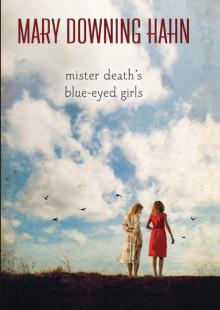 Mister Death's Blue-Eyed Girls
Mister Death's Blue-Eyed Girls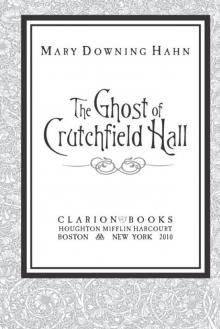 The Ghost of Crutchfield Hall
The Ghost of Crutchfield Hall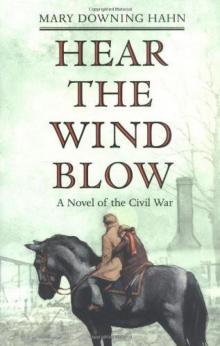 Hear the Wind Blow
Hear the Wind Blow Time of the Witch
Time of the Witch The Girl in the Locked Room: A Ghost Story
The Girl in the Locked Room: A Ghost Story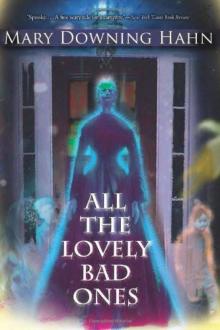 All the Lovely Bad Ones
All the Lovely Bad Ones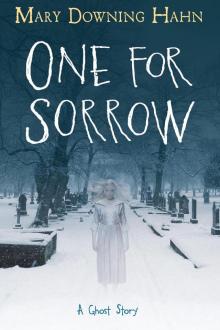 One for Sorrow
One for Sorrow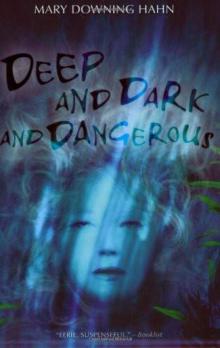 Deep and Dark and Dangerous
Deep and Dark and Dangerous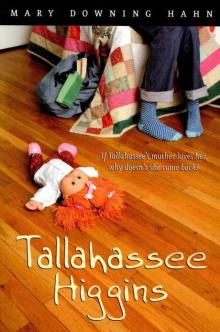 Tallahassee Higgins
Tallahassee Higgins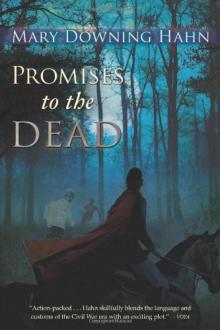 Promises to the Dead
Promises to the Dead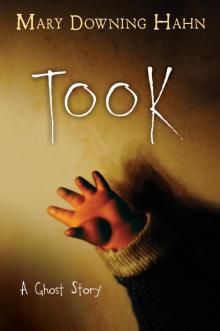 Took: A Ghost Story
Took: A Ghost Story Following My Own Footsteps
Following My Own Footsteps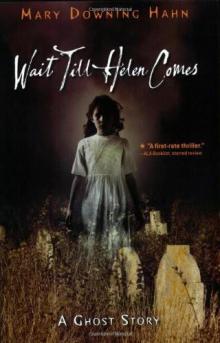 Wait Till Helen Comes: A Ghost Story
Wait Till Helen Comes: A Ghost Story Where I Belong
Where I Belong The Spanish Kidnapping Disaster
The Spanish Kidnapping Disaster Look for Me by Moonlight
Look for Me by Moonlight The Old Willis Place
The Old Willis Place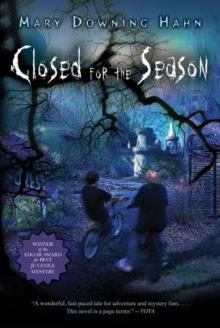 Closed for the Season
Closed for the Season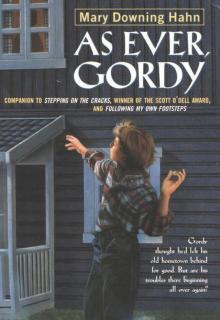 As Ever, Gordy
As Ever, Gordy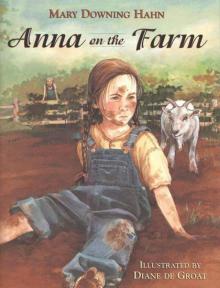 Anna on the Farm
Anna on the Farm The Doll in the Garden
The Doll in the Garden Daphne's Book
Daphne's Book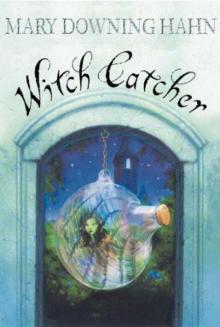 Witch Catcher
Witch Catcher The Gentleman Outlaw and Me--Eli
The Gentleman Outlaw and Me--Eli Wait Till Helen Comes
Wait Till Helen Comes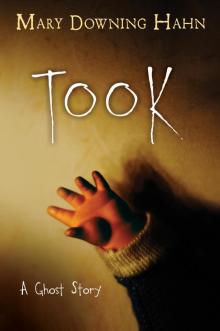 Took
Took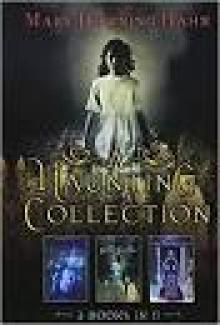 A Haunting Collection
A Haunting Collection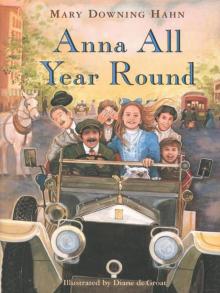 Anna All Year Round
Anna All Year Round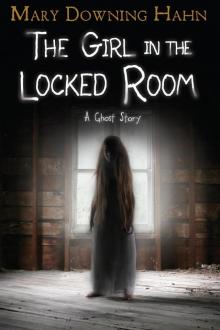 The Girl in the Locked Room
The Girl in the Locked Room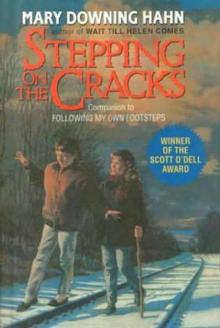 Stepping on the Cracks
Stepping on the Cracks